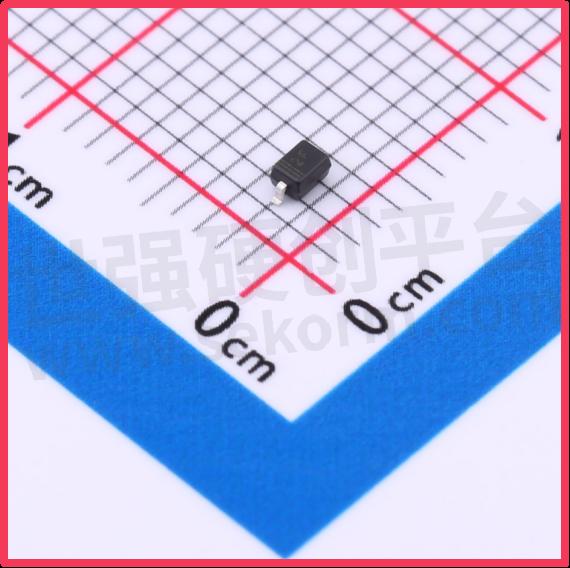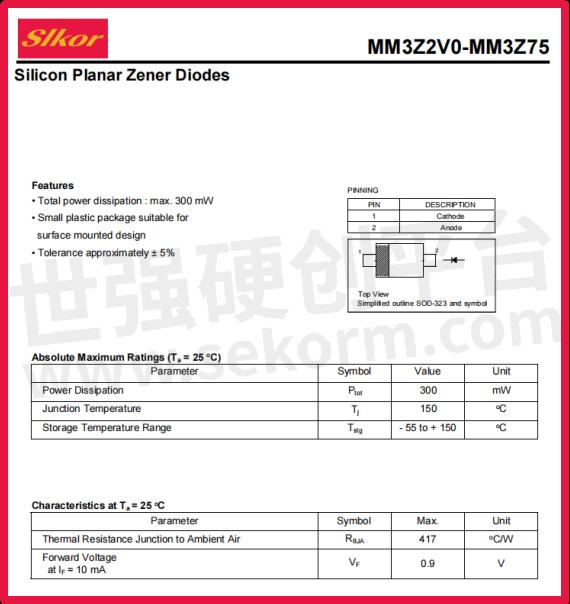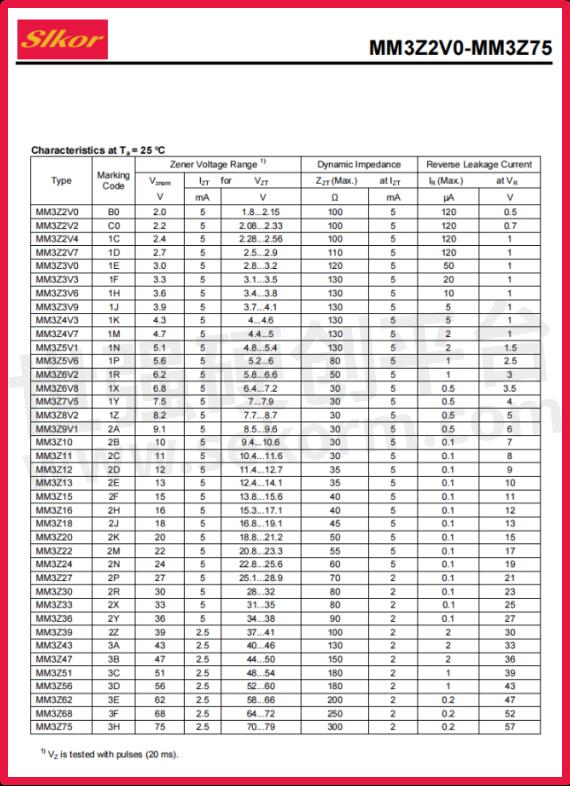SLKOR MM3Z15 Voltage Regulator Diode, with A Nominal Voltage Rating of 15v, Becomes The New Choice for Circuit Protection

In the design and manufacturing of electronic devices, voltage regulator diodes play a crucial role. They ensure that the voltage in a circuit remains stable, protecting equipment from damage caused by voltage fluctuations. Today, we will take a closer look at an outstanding voltage regulator diode: the MM3Z15.
1. Basic Specifications of the MM3Z15
The MM3Z15 is an excellent voltage regulator diode with a nominal voltage rating of 15V. This means that under normal operating conditions, the MM3Z15 can stabilize the voltage in the circuit at approximately 15V, ensuring the device operates smoothly.
In addition to the nominal voltage, the MM3Z15 has a voltage regulation range of 13.8V to 15.6V. This range indicates that under extreme conditions, the voltage regulation may fluctuate within these values. However, rest assured that such fluctuations are within acceptable limits and will not significantly impact the device's performance.

SLKOR Voltage Regulator Diode MM3Z15 product photo
Power is another critical metric for evaluating the performance of a voltage regulator diode. The MM3Z15 has a power rating of 300mW, meaning it can handle a certain level of current and voltage without overheating and sustaining damage. This makes the MM3Z15 capable of delivering outstanding performance even in circuits that require handling higher power levels.

Slkor Voltage Regulator Diode MM3Z15 specification
Reverse current (Ir) is the current flowing through a voltage regulator diode when subjected to reverse voltage. For the MM3Z15, the reverse current is 0.1µA. This minimal reverse current ensures that the MM3Z15 can maintain a stable operational state under reverse voltage without interfering with the circuit.

Parameters of Slkor Voltage Regulator Diode MM3Z15
2. The Importance of the MM3Z15
The role of voltage regulator diodes in circuits cannot be overstated. They protect other components in the circuit from the effects of voltage fluctuations, ensuring stability and reliability. The MM3Z15, as a high-performance voltage regulator diode, has been meticulously designed and optimized regarding its voltage regulation, power, and reverse current parameters, allowing it to perform exceptionally well across various circuits.
3. Specific Applications of Voltage Regulator Diodes in Microprocessor Circuits
In microprocessor circuits, voltage regulator diodes play a vital role. They not only help maintain stable voltage but also protect microprocessors from the effects of voltage fluctuations, ensuring normal operation and extending their lifespan.
a. Maintaining Voltage Stability
Microprocessors require a stable voltage supply to ensure their internal logic circuits operate correctly. However, due to the instability of the power supply and interference from other components in the circuit, microprocessors may face voltage fluctuation issues. Here, voltage regulator diodes play a significant role.
Voltage regulator diodes are connected in parallel with the power pins of the microprocessor. When the power supply voltage rises, the voltage regulator diode will conduct, diverting excess current to ground and stabilizing the voltage at the microprocessor's power pins. This way, even if the power supply voltage fluctuates, the microprocessor can operate within a stable voltage environment, preventing logic errors or damage due to excessive or insufficient voltage.
b. Protecting Microprocessors from Voltage Fluctuations
In addition to maintaining voltage stability, voltage regulator diodes also protect microprocessors from voltage fluctuations. In a circuit, unexpected voltage spikes or surges may occur, which can seriously damage the microprocessor. Voltage regulator diodes respond quickly and limit current, allowing them to conduct rapidly during abnormal voltage conditions and redirect the excess voltage to ground, thereby safeguarding the microprocessor.
c. Common Types and Configurations of Voltage Regulator Diodes
Common types of voltage regulator diodes in microprocessor circuits include Zener diodes and avalanche diodes. Zener diodes feature lower breakdown voltages and faster response times, making them suitable for applications requiring high voltage stability. On the other hand, avalanche diodes have higher breakdown voltages and greater power handling capabilities, making them ideal for high-power applications.
In terms of configuration, voltage regulator diodes are typically connected in parallel with the power pins of the microprocessor and wired in series with a current-limiting resistor. The current-limiting resistor serves to restrict the current flowing through the voltage regulator diode during conduction, preventing overheating and damage. Additionally, to ensure the proper functioning of the voltage regulator diode, suitable filter capacitors and decoupling capacitors must be placed in the circuit to eliminate high-frequency noise and interference from the power supply.
- +1 Like
- Add to Favorites
Recommend
- The Importance of Slkor Zener Diode MM3Z27 in Precision Measuring Instruments
- The Voltage Regulator Diode MM3Z24 Features a Maximum Power Dissipation of 300mW and a Stable Voltage Value of 24V
- The Voltage Regulator Diode MM3Z18 Features A Maximum Power Dissipation of 300mW and A Stable Voltage Value of 18V
- The Voltage Regulator Diode MM3Z12 Features A Maximum Power Dissipation of 300mW and A Stable Voltage Value of 12V
- The Voltage Regulator Diode MM3Z6V2 Features A Maximum Power Dissipation of 300mW and A Stable Voltage Value of 6.2V
- A Detailed Analysis of the Advantages and Highlights of the Voltage Regulator Diode MM3Z5V1
- Zener Diode MM3Z5V6 Features Stable Output Voltage and Excellent Electrical Performance
- The Voltage Regulator Diode MM3Z20 Offers Precise Voltage Regulation, Stable Voltage References and Effective Overvoltage Protection
This document is provided by Sekorm Platform for VIP exclusive service. The copyright is owned by Sekorm. Without authorization, any medias, websites or individual are not allowed to reprint. When authorizing the reprint, the link of www.sekorm.com must be indicated.





























































































































































































































































































































































































































































































































































































































































































































































































































































































